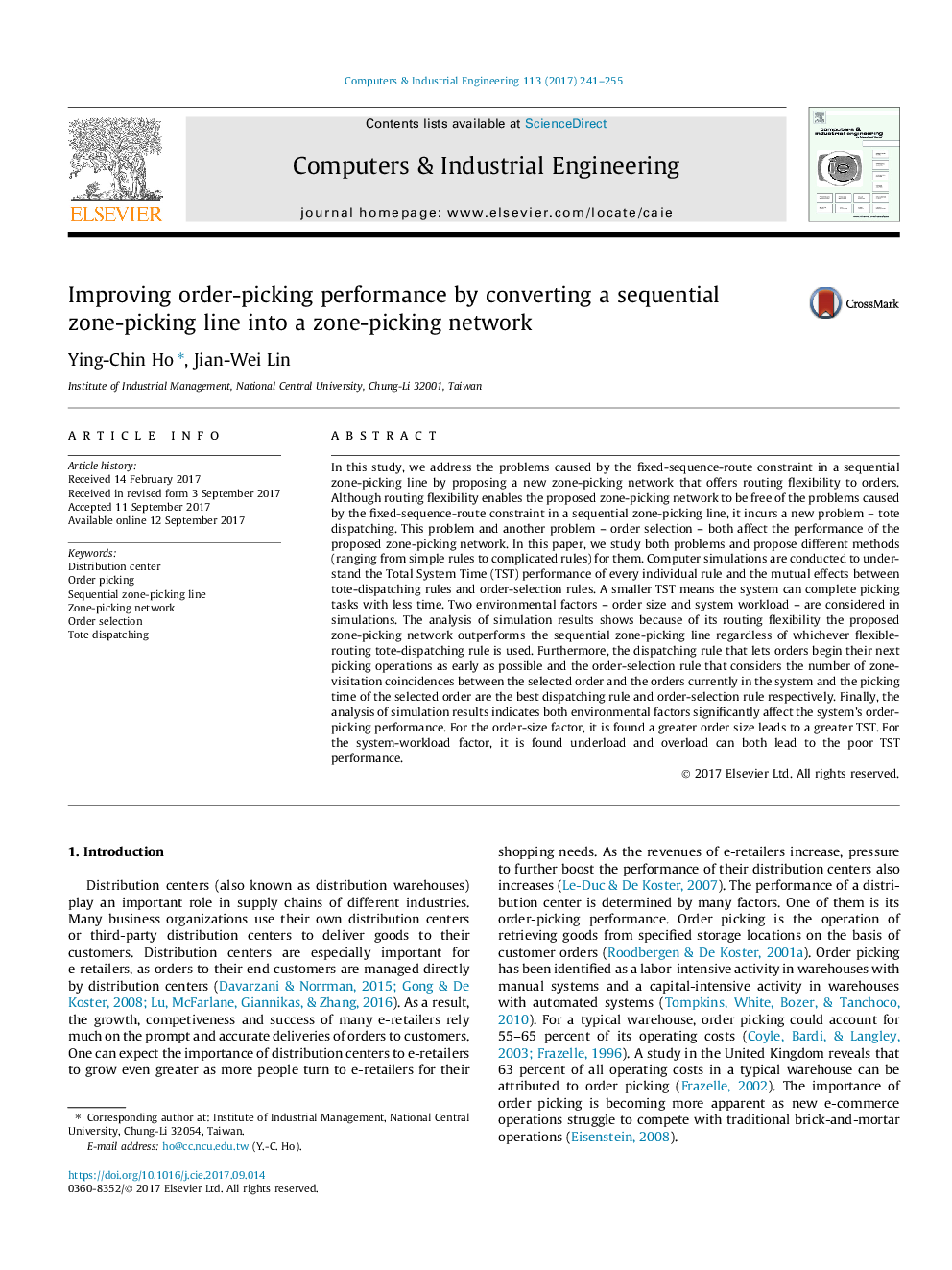| کد مقاله | کد نشریه | سال انتشار | مقاله انگلیسی | نسخه تمام متن |
|---|---|---|---|---|
| 5127433 | 1489053 | 2017 | 15 صفحه PDF | دانلود رایگان |
- A zone-picking network that can provide routing flexibility to orders is proposed.
- Two problems - tote dispatching and order selection - are studied.
- The method with the best total system time performance is found for each problem.
- This study finds order size and system workload affect the system's performance.
- It is also found the proposed system outperforms the sequential zone-picking line.
In this study, we address the problems caused by the fixed-sequence-route constraint in a sequential zone-picking line by proposing a new zone-picking network that offers routing flexibility to orders. Although routing flexibility enables the proposed zone-picking network to be free of the problems caused by the fixed-sequence-route constraint in a sequential zone-picking line, it incurs a new problem - tote dispatching. This problem and another problem - order selection - both affect the performance of the proposed zone-picking network. In this paper, we study both problems and propose different methods (ranging from simple rules to complicated rules) for them. Computer simulations are conducted to understand the Total System Time (TST) performance of every individual rule and the mutual effects between tote-dispatching rules and order-selection rules. A smaller TST means the system can complete picking tasks with less time. Two environmental factors - order size and system workload - are considered in simulations. The analysis of simulation results shows because of its routing flexibility the proposed zone-picking network outperforms the sequential zone-picking line regardless of whichever flexible-routing tote-dispatching rule is used. Furthermore, the dispatching rule that lets orders begin their next picking operations as early as possible and the order-selection rule that considers the number of zone-visitation coincidences between the selected order and the orders currently in the system and the picking time of the selected order are the best dispatching rule and order-selection rule respectively. Finally, the analysis of simulation results indicates both environmental factors significantly affect the system's order-picking performance. For the order-size factor, it is found a greater order size leads to a greater TST. For the system-workload factor, it is found underload and overload can both lead to the poor TST performance.
Journal: Computers & Industrial Engineering - Volume 113, November 2017, Pages 241-255
